R.J. Stowell's Blog: rjsomeone, page 50
January 2, 2019
Led Zeppelin
During September 1968, The New Yardbirds, Jimmy Page, John Bonham, John Paul Jones and Robert Plant, toured Scandinavia performing Yardbirds material as well as new material like "Communication Breakdown," "I Can't Quit You, Baby," "You Shook Me," "Babe I'm Gonna Leave You," and "How Many More Times." That same month, at Keith Moon's mocking, The New Yardbirds were renamed Led Zeppelin, and on October 15, 1968, Led Zeppelin made their debut at Surrey University. Soon after, the group began touring the U.S., backing up headliners like Vanilla Fudge and The MC5. Nearly instantaneous recognition followed. On January 31, 1969, Led Zeppelin opened for Iron Butterfly, who, due to "In a Gadda Da Vida," were one of the hottest bands in the world. Led Zeppelin received such resounding approval from the audience that Doug Ingle, lead singer for the Butterfly scrapped the remainder of the tour. Led Zeppelin had become headliners in their own right.
The new band name was suggested by The Who's Keith Moon who said that the New Yardbirds would "Take off like a led balloon." Led Zeppelin would end up opening for Vanilla Fudge with the band name mistakenly advertised as "Len Zeffelin." Doesn't quite have the same ring to it. No one had ever heard anything like it. By the time Zeppelin left the stage, psychedelia was dead and heavy metal was born. Poor Vanilla Fudge.
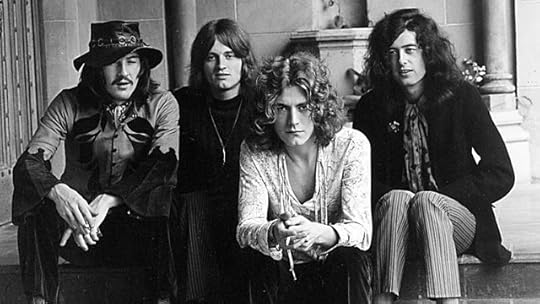
Within eight months of their official debut, Zeppelin was at the top of the bill at the Playhouse Theater in London, and the Pop Proms at the Royal Albert Hall. On October 17, 1969, a year after the band's inception, Zeppelin played Carnegie Hall, ending a ban on rock groups caused by the Rolling Stones' antics in 1965.
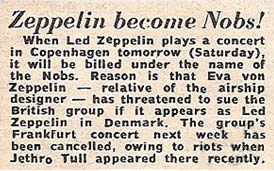 While playing in Denmark, Eva von Zeppelin, a relative of the designer of the airship, Ferdinand von Zeppelin, threatened to sue the band if they used the name for their gig in Copenhagen. For that one show, Led Zeppelin played under the alias, The Nobs.
While playing in Denmark, Eva von Zeppelin, a relative of the designer of the airship, Ferdinand von Zeppelin, threatened to sue the band if they used the name for their gig in Copenhagen. For that one show, Led Zeppelin played under the alias, The Nobs.
The first LP took but 36 hours of studio time, including mixing and mastering and was fit into the band's hectic touring schedule. The band was without a label and on the clock to the tune of £1,782, or roughly $3,500. Released January 12, 1969, in the U.S., Led Zeppelin climbed to No. 10 in the U.S. and to No. 6 in the U.K. (Released March 28th). Until the late 60s, producers placed microphones directly in front of the amplifiers and drums. For Led Zeppelin, Page placed an additional microphone some distance from the amplifier (as far as twenty feet) and then recorded the balance between the two. By adopting this "distance equals depth" technique, Page was among the first producers to record a band's "ambient sound;" the distance of a note's time-lag from one end of the room to the other. Led Zeppelin was the first album to be released in stereo-only form; at the time, the practice of releasing both mono and stereo versions was the norm. The LP was the virtual Sgt. Pepper of Heavy Metal Blues.
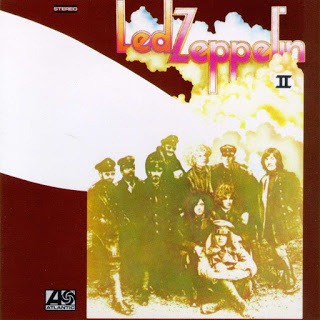 Somehow, this band of misfits broke down the walls of critics (who abhorred the first LP) going straight for the audience, and won with their interpolation of blues, garage rock, soul, shuffle, psychedelic vibes and violin-bowed guitar fer chrissakes; they were over-the-top and minimalist, often in the same song. With tracks about hobbits, mythology and sex in equal form, Led Zeppelin made it look easy.
Somehow, this band of misfits broke down the walls of critics (who abhorred the first LP) going straight for the audience, and won with their interpolation of blues, garage rock, soul, shuffle, psychedelic vibes and violin-bowed guitar fer chrissakes; they were over-the-top and minimalist, often in the same song. With tracks about hobbits, mythology and sex in equal form, Led Zeppelin made it look easy.
Led Zeppelin's debut album (AM8) is a monster of barely contained monolithic intensity (yeah pompous as shit). The album's artistic success hinges on the tension between the reflective/creative/experimental natures of Jimmy Page and John Paul Jones rubbing elbows with the bombastic/flamboyant/amped-up traditionalism of Robert Plant and John Bonham. When these tensions interact fireworks ensue. These are basic musical forms, blues, folk and bluegrass, taken to new extremes of sonic density and timbrel heaviness. Here was a conscious move to unearth the swamp blues from which all rock and roll originated and, at the same time, revitalize the format for a contemporary audience. The likes of The Yardbirds, The Small Faces, John Mayall's Bluesbreakers and Joe Cocker fronted a movement that occasionally bruised the singles chart, but was primarily an underground faction. Hendrix, Beck and Cream pushed this to another, darker dimension and Zeppelin's debut was an integral player in the cadre that opened the floodgates to a bevy of progressive bands whose growing obsession with self-indulgent, sprawling epics lead to an inevitable implosion and the backlash that was punk. That's a lot of rock history in one breath: Led Zeppelin was the catalyst for it all. By year's end, the band released Led Zeppelin II (Led Zeppelin II, quickly moved up to No. 1 in both the U.S. and the U.K., remaining on the charts for 98 weeks in the States and an astounding 138 weeks in Britain.)
 Late in '69 we'd just moved to a new apartment in North Hollywood. There was no furniture in the living room, bar the white Mediterranean style console stereo. My mother was putting up new curtains and my brother put on Zeppelin II. The acoustic effects (because of the empty room) were amazing, and the transfer of sound from one speaker to the other intensified my fascination. My mother yelled, "Turn that down." There may have been the insertion of an expletive. Nothing seals one's affinity for a rock LP like the criticism of a parent. Just eight years old at the time, I was sold.
Late in '69 we'd just moved to a new apartment in North Hollywood. There was no furniture in the living room, bar the white Mediterranean style console stereo. My mother was putting up new curtains and my brother put on Zeppelin II. The acoustic effects (because of the empty room) were amazing, and the transfer of sound from one speaker to the other intensified my fascination. My mother yelled, "Turn that down." There may have been the insertion of an expletive. Nothing seals one's affinity for a rock LP like the criticism of a parent. Just eight years old at the time, I was sold.
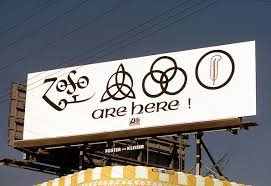 Want to know what hard rock is? Led Zeppelin II (AM8), no bones about it. Zep II delivers in spades with bountiful and bludgeoning force, sex-hot passion, and intricate grace. "Whole Lotta Love" immediately seduces with Page's strutting chops, driving drums and Plant's mile-high wails before hurtling the listener into a sparse and shaky atmosphere of twitching percussion and mind bending guitar squeals. And that's just the first track. Just try to sit still through "The Lemon Song," absorb the beautifully understated "Thank You" and don't forget the Bonham showcase "Moby Dick." This album exhibits a handful of the most influential songs in rock history with blues-soaked attitude to spare, indulgences in instrumentation that have yet to be surpassed, and compositions designed to rock your ass. Zep II is why the boys had their own private jet.
Want to know what hard rock is? Led Zeppelin II (AM8), no bones about it. Zep II delivers in spades with bountiful and bludgeoning force, sex-hot passion, and intricate grace. "Whole Lotta Love" immediately seduces with Page's strutting chops, driving drums and Plant's mile-high wails before hurtling the listener into a sparse and shaky atmosphere of twitching percussion and mind bending guitar squeals. And that's just the first track. Just try to sit still through "The Lemon Song," absorb the beautifully understated "Thank You" and don't forget the Bonham showcase "Moby Dick." This album exhibits a handful of the most influential songs in rock history with blues-soaked attitude to spare, indulgences in instrumentation that have yet to be surpassed, and compositions designed to rock your ass. Zep II is why the boys had their own private jet.
The new band name was suggested by The Who's Keith Moon who said that the New Yardbirds would "Take off like a led balloon." Led Zeppelin would end up opening for Vanilla Fudge with the band name mistakenly advertised as "Len Zeffelin." Doesn't quite have the same ring to it. No one had ever heard anything like it. By the time Zeppelin left the stage, psychedelia was dead and heavy metal was born. Poor Vanilla Fudge.

Within eight months of their official debut, Zeppelin was at the top of the bill at the Playhouse Theater in London, and the Pop Proms at the Royal Albert Hall. On October 17, 1969, a year after the band's inception, Zeppelin played Carnegie Hall, ending a ban on rock groups caused by the Rolling Stones' antics in 1965.
 While playing in Denmark, Eva von Zeppelin, a relative of the designer of the airship, Ferdinand von Zeppelin, threatened to sue the band if they used the name for their gig in Copenhagen. For that one show, Led Zeppelin played under the alias, The Nobs.
While playing in Denmark, Eva von Zeppelin, a relative of the designer of the airship, Ferdinand von Zeppelin, threatened to sue the band if they used the name for their gig in Copenhagen. For that one show, Led Zeppelin played under the alias, The Nobs.The first LP took but 36 hours of studio time, including mixing and mastering and was fit into the band's hectic touring schedule. The band was without a label and on the clock to the tune of £1,782, or roughly $3,500. Released January 12, 1969, in the U.S., Led Zeppelin climbed to No. 10 in the U.S. and to No. 6 in the U.K. (Released March 28th). Until the late 60s, producers placed microphones directly in front of the amplifiers and drums. For Led Zeppelin, Page placed an additional microphone some distance from the amplifier (as far as twenty feet) and then recorded the balance between the two. By adopting this "distance equals depth" technique, Page was among the first producers to record a band's "ambient sound;" the distance of a note's time-lag from one end of the room to the other. Led Zeppelin was the first album to be released in stereo-only form; at the time, the practice of releasing both mono and stereo versions was the norm. The LP was the virtual Sgt. Pepper of Heavy Metal Blues.
 Somehow, this band of misfits broke down the walls of critics (who abhorred the first LP) going straight for the audience, and won with their interpolation of blues, garage rock, soul, shuffle, psychedelic vibes and violin-bowed guitar fer chrissakes; they were over-the-top and minimalist, often in the same song. With tracks about hobbits, mythology and sex in equal form, Led Zeppelin made it look easy.
Somehow, this band of misfits broke down the walls of critics (who abhorred the first LP) going straight for the audience, and won with their interpolation of blues, garage rock, soul, shuffle, psychedelic vibes and violin-bowed guitar fer chrissakes; they were over-the-top and minimalist, often in the same song. With tracks about hobbits, mythology and sex in equal form, Led Zeppelin made it look easy.Led Zeppelin's debut album (AM8) is a monster of barely contained monolithic intensity (yeah pompous as shit). The album's artistic success hinges on the tension between the reflective/creative/experimental natures of Jimmy Page and John Paul Jones rubbing elbows with the bombastic/flamboyant/amped-up traditionalism of Robert Plant and John Bonham. When these tensions interact fireworks ensue. These are basic musical forms, blues, folk and bluegrass, taken to new extremes of sonic density and timbrel heaviness. Here was a conscious move to unearth the swamp blues from which all rock and roll originated and, at the same time, revitalize the format for a contemporary audience. The likes of The Yardbirds, The Small Faces, John Mayall's Bluesbreakers and Joe Cocker fronted a movement that occasionally bruised the singles chart, but was primarily an underground faction. Hendrix, Beck and Cream pushed this to another, darker dimension and Zeppelin's debut was an integral player in the cadre that opened the floodgates to a bevy of progressive bands whose growing obsession with self-indulgent, sprawling epics lead to an inevitable implosion and the backlash that was punk. That's a lot of rock history in one breath: Led Zeppelin was the catalyst for it all. By year's end, the band released Led Zeppelin II (Led Zeppelin II, quickly moved up to No. 1 in both the U.S. and the U.K., remaining on the charts for 98 weeks in the States and an astounding 138 weeks in Britain.)
 Late in '69 we'd just moved to a new apartment in North Hollywood. There was no furniture in the living room, bar the white Mediterranean style console stereo. My mother was putting up new curtains and my brother put on Zeppelin II. The acoustic effects (because of the empty room) were amazing, and the transfer of sound from one speaker to the other intensified my fascination. My mother yelled, "Turn that down." There may have been the insertion of an expletive. Nothing seals one's affinity for a rock LP like the criticism of a parent. Just eight years old at the time, I was sold.
Late in '69 we'd just moved to a new apartment in North Hollywood. There was no furniture in the living room, bar the white Mediterranean style console stereo. My mother was putting up new curtains and my brother put on Zeppelin II. The acoustic effects (because of the empty room) were amazing, and the transfer of sound from one speaker to the other intensified my fascination. My mother yelled, "Turn that down." There may have been the insertion of an expletive. Nothing seals one's affinity for a rock LP like the criticism of a parent. Just eight years old at the time, I was sold. Want to know what hard rock is? Led Zeppelin II (AM8), no bones about it. Zep II delivers in spades with bountiful and bludgeoning force, sex-hot passion, and intricate grace. "Whole Lotta Love" immediately seduces with Page's strutting chops, driving drums and Plant's mile-high wails before hurtling the listener into a sparse and shaky atmosphere of twitching percussion and mind bending guitar squeals. And that's just the first track. Just try to sit still through "The Lemon Song," absorb the beautifully understated "Thank You" and don't forget the Bonham showcase "Moby Dick." This album exhibits a handful of the most influential songs in rock history with blues-soaked attitude to spare, indulgences in instrumentation that have yet to be surpassed, and compositions designed to rock your ass. Zep II is why the boys had their own private jet.
Want to know what hard rock is? Led Zeppelin II (AM8), no bones about it. Zep II delivers in spades with bountiful and bludgeoning force, sex-hot passion, and intricate grace. "Whole Lotta Love" immediately seduces with Page's strutting chops, driving drums and Plant's mile-high wails before hurtling the listener into a sparse and shaky atmosphere of twitching percussion and mind bending guitar squeals. And that's just the first track. Just try to sit still through "The Lemon Song," absorb the beautifully understated "Thank You" and don't forget the Bonham showcase "Moby Dick." This album exhibits a handful of the most influential songs in rock history with blues-soaked attitude to spare, indulgences in instrumentation that have yet to be surpassed, and compositions designed to rock your ass. Zep II is why the boys had their own private jet.
Published on January 02, 2019 05:01
December 31, 2018
Favorite LPs of 2018
On the new radio broadcast, we focus on 50 years ago. AM hasn't turned its back on modern music, indeed we're seeing tinges of a rock renaissance, Americana at its best and a vibrant alternative scene. I mentioned that with the new show on iHeart Radio, AM would now post only on Tuesdays and Fridays. I lied. There will definitely be those posts twice per week, but in between, I'll still throw in my 2 cents. It's the end of the year, after all, time to celebrate the best LPs, or at least my faves, for 2018.
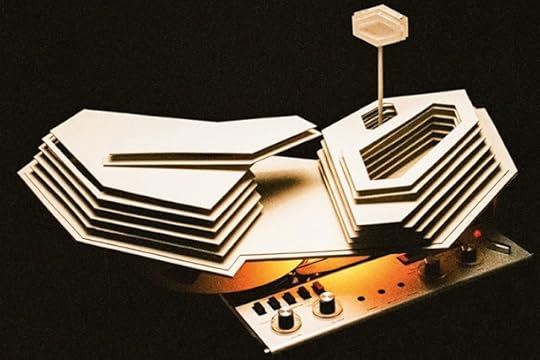
The Arctic Monkeys' Tranquility Base Hotel & Casino isn't getting rave reviews on TripAdvisor. The views are sublime, but the food's no better than the Taco Bell on earth. This isn't typical Arctic Monkeys, btw, and it contains none of the sophistication of Alex Turner's side project The Last Shadow Puppets, but this bachelor-pad romp shows Spiritualized how it's done. It's an album for a near-future where technology is better but everyone's still miserable. No one's been this unhappy since Morrissey. You gotta love it.
If you don't care for the vibe at Tranquility Base Hotel and Casino, even if you love the music, then Beach House's pre-apocalyptic 7 is for you. Here's an all-night dance party for the end of it all (a la Prince's 1999). Aggressive and articulated layers of synth and guitar make for a far less spacy world than the Arctic Monkeys, if equally mesmerizing, and Victoria LeGrand's dream pop vocals provide a glimmer of hope in this melancholy to further cornfuse the vibe. If I owned a space station, this is the music I would play in the lobby.
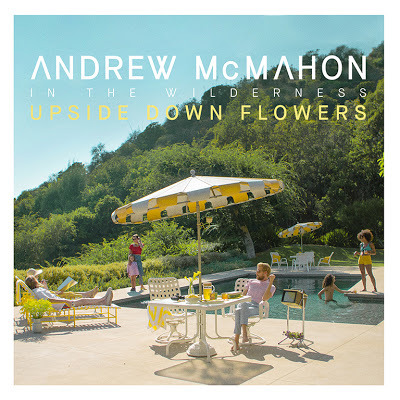 When we last heard from Death Cab For Cutie, it was 2015's Kintsugi, the last LP on which Ben Gibbard was in his 30s. Does that matter? Maybe when you're 40 you try harder. From the Decemberists to Copeland, the music I was in love with in the naughts is aging. Kintsugi was enjoyable if unremarkable and without Chris Walla, where Death Cab would head was shaky ground. As a diehard DC fan, Kintsugi was fine if aged fare, but Thank You For Today is my favorite LP since Narrow Stairs, and that makes me happy. The album's best tracks are front-loaded. "I Dreamt We Spoke Again” is hypnotizing in its rhythms. "Summer Years" is a gorgeous tune where Gibbard ponders: "And I wonder where you are tonight/ If the one you're with was a compromise/As we're walking lines in parallel/ That will never meet and it's just as well", wow. The uptempo and playful "Gold Rush" radio single continues the good vibe. Things slow down for "Your Hurricane." Side B opens with the pensive "Autumn Love", where Gibbard croons "And if I capsize it's alright/ 'Cause I've been feeling too invincible/ I need to know depths deeper than the deepest of connections". "Northern Lights" is another highlight, with a nice (Cure-reminding) instrumental drive. The album closes with the defiant "60 & Punk", where Gibbard comments "When I met you I was 22/ Trying so hard to play it cool/ But there was so much that I needed to say/ And nothing came out the right way", and we are left wondering who this song is about? Interestingly, I have always been a Pet Shop Boys' loyalist and apologist. Forgetting the EDM of recent years, PSB has been the thinking man's dance band. When I first heard Thank You For Today, I thought it was PSB returned to form. I'm older too. My hearing may not be as good.
When we last heard from Death Cab For Cutie, it was 2015's Kintsugi, the last LP on which Ben Gibbard was in his 30s. Does that matter? Maybe when you're 40 you try harder. From the Decemberists to Copeland, the music I was in love with in the naughts is aging. Kintsugi was enjoyable if unremarkable and without Chris Walla, where Death Cab would head was shaky ground. As a diehard DC fan, Kintsugi was fine if aged fare, but Thank You For Today is my favorite LP since Narrow Stairs, and that makes me happy. The album's best tracks are front-loaded. "I Dreamt We Spoke Again” is hypnotizing in its rhythms. "Summer Years" is a gorgeous tune where Gibbard ponders: "And I wonder where you are tonight/ If the one you're with was a compromise/As we're walking lines in parallel/ That will never meet and it's just as well", wow. The uptempo and playful "Gold Rush" radio single continues the good vibe. Things slow down for "Your Hurricane." Side B opens with the pensive "Autumn Love", where Gibbard croons "And if I capsize it's alright/ 'Cause I've been feeling too invincible/ I need to know depths deeper than the deepest of connections". "Northern Lights" is another highlight, with a nice (Cure-reminding) instrumental drive. The album closes with the defiant "60 & Punk", where Gibbard comments "When I met you I was 22/ Trying so hard to play it cool/ But there was so much that I needed to say/ And nothing came out the right way", and we are left wondering who this song is about? Interestingly, I have always been a Pet Shop Boys' loyalist and apologist. Forgetting the EDM of recent years, PSB has been the thinking man's dance band. When I first heard Thank You For Today, I thought it was PSB returned to form. I'm older too. My hearing may not be as good.
After all these years of following Andrew McMahon's career, I consider him a good friend; one I can rely on, though we parted ways a bit with Zombies on Broadway (my daughter and my wife loved it). With the new album, though, we've made our auld lang synes. I love Upside Down Flowers. You will too. It's a culmination of everything Something Corporate and Jack's Mannequin and takes what's best from AM in the Wilderness.
When for the first three, maybe five LPs Elvis Costello's aim was true, his work after Get Happy, even the critical fave Imperial Bedroom, has been haphazard in a way that Woody Allen's films are. There are touches of brilliance, often, and yet there are misses as well. But on Look Now, Elvis's first LP with the Imposters in ten years (and his 127th overall) features over-the-top production and EC's best songwriting in recent memory. He's always had one of rock's best voices, and these songs serve his instrument particularly well. Whether he's crooning theatrical Burt Bacharach or Carole King co-writes or belting out the post-punk stylings he invented in the late 70s, this is the best LP from late 2018.

The Arctic Monkeys' Tranquility Base Hotel & Casino isn't getting rave reviews on TripAdvisor. The views are sublime, but the food's no better than the Taco Bell on earth. This isn't typical Arctic Monkeys, btw, and it contains none of the sophistication of Alex Turner's side project The Last Shadow Puppets, but this bachelor-pad romp shows Spiritualized how it's done. It's an album for a near-future where technology is better but everyone's still miserable. No one's been this unhappy since Morrissey. You gotta love it.
If you don't care for the vibe at Tranquility Base Hotel and Casino, even if you love the music, then Beach House's pre-apocalyptic 7 is for you. Here's an all-night dance party for the end of it all (a la Prince's 1999). Aggressive and articulated layers of synth and guitar make for a far less spacy world than the Arctic Monkeys, if equally mesmerizing, and Victoria LeGrand's dream pop vocals provide a glimmer of hope in this melancholy to further cornfuse the vibe. If I owned a space station, this is the music I would play in the lobby.
 When we last heard from Death Cab For Cutie, it was 2015's Kintsugi, the last LP on which Ben Gibbard was in his 30s. Does that matter? Maybe when you're 40 you try harder. From the Decemberists to Copeland, the music I was in love with in the naughts is aging. Kintsugi was enjoyable if unremarkable and without Chris Walla, where Death Cab would head was shaky ground. As a diehard DC fan, Kintsugi was fine if aged fare, but Thank You For Today is my favorite LP since Narrow Stairs, and that makes me happy. The album's best tracks are front-loaded. "I Dreamt We Spoke Again” is hypnotizing in its rhythms. "Summer Years" is a gorgeous tune where Gibbard ponders: "And I wonder where you are tonight/ If the one you're with was a compromise/As we're walking lines in parallel/ That will never meet and it's just as well", wow. The uptempo and playful "Gold Rush" radio single continues the good vibe. Things slow down for "Your Hurricane." Side B opens with the pensive "Autumn Love", where Gibbard croons "And if I capsize it's alright/ 'Cause I've been feeling too invincible/ I need to know depths deeper than the deepest of connections". "Northern Lights" is another highlight, with a nice (Cure-reminding) instrumental drive. The album closes with the defiant "60 & Punk", where Gibbard comments "When I met you I was 22/ Trying so hard to play it cool/ But there was so much that I needed to say/ And nothing came out the right way", and we are left wondering who this song is about? Interestingly, I have always been a Pet Shop Boys' loyalist and apologist. Forgetting the EDM of recent years, PSB has been the thinking man's dance band. When I first heard Thank You For Today, I thought it was PSB returned to form. I'm older too. My hearing may not be as good.
When we last heard from Death Cab For Cutie, it was 2015's Kintsugi, the last LP on which Ben Gibbard was in his 30s. Does that matter? Maybe when you're 40 you try harder. From the Decemberists to Copeland, the music I was in love with in the naughts is aging. Kintsugi was enjoyable if unremarkable and without Chris Walla, where Death Cab would head was shaky ground. As a diehard DC fan, Kintsugi was fine if aged fare, but Thank You For Today is my favorite LP since Narrow Stairs, and that makes me happy. The album's best tracks are front-loaded. "I Dreamt We Spoke Again” is hypnotizing in its rhythms. "Summer Years" is a gorgeous tune where Gibbard ponders: "And I wonder where you are tonight/ If the one you're with was a compromise/As we're walking lines in parallel/ That will never meet and it's just as well", wow. The uptempo and playful "Gold Rush" radio single continues the good vibe. Things slow down for "Your Hurricane." Side B opens with the pensive "Autumn Love", where Gibbard croons "And if I capsize it's alright/ 'Cause I've been feeling too invincible/ I need to know depths deeper than the deepest of connections". "Northern Lights" is another highlight, with a nice (Cure-reminding) instrumental drive. The album closes with the defiant "60 & Punk", where Gibbard comments "When I met you I was 22/ Trying so hard to play it cool/ But there was so much that I needed to say/ And nothing came out the right way", and we are left wondering who this song is about? Interestingly, I have always been a Pet Shop Boys' loyalist and apologist. Forgetting the EDM of recent years, PSB has been the thinking man's dance band. When I first heard Thank You For Today, I thought it was PSB returned to form. I'm older too. My hearing may not be as good.After all these years of following Andrew McMahon's career, I consider him a good friend; one I can rely on, though we parted ways a bit with Zombies on Broadway (my daughter and my wife loved it). With the new album, though, we've made our auld lang synes. I love Upside Down Flowers. You will too. It's a culmination of everything Something Corporate and Jack's Mannequin and takes what's best from AM in the Wilderness.
When for the first three, maybe five LPs Elvis Costello's aim was true, his work after Get Happy, even the critical fave Imperial Bedroom, has been haphazard in a way that Woody Allen's films are. There are touches of brilliance, often, and yet there are misses as well. But on Look Now, Elvis's first LP with the Imposters in ten years (and his 127th overall) features over-the-top production and EC's best songwriting in recent memory. He's always had one of rock's best voices, and these songs serve his instrument particularly well. Whether he's crooning theatrical Burt Bacharach or Carole King co-writes or belting out the post-punk stylings he invented in the late 70s, this is the best LP from late 2018.
Published on December 31, 2018 04:52
December 30, 2018
AM and AM on the Radio - iHeartRADIO
 As we head into the new year, AM will refocus on new content and now, with our new radio broadcast at Daybreak USA, our new commitment to our readers is to post faithfully twice per week, on Tuesdays and Fridays. Our goal was always to post on a daily basis, something we've done reasonably faithfully for the past five years. The new format will allow for more comprehensive articles and will also coincide with the week's radio edition of AM.
As we head into the new year, AM will refocus on new content and now, with our new radio broadcast at Daybreak USA, our new commitment to our readers is to post faithfully twice per week, on Tuesdays and Fridays. Our goal was always to post on a daily basis, something we've done reasonably faithfully for the past five years. The new format will allow for more comprehensive articles and will also coincide with the week's radio edition of AM.Our new format starts this Friday. In the meantime, check out our archives and listen on Daybreak USA, your local affiliate or on
 click on the logo
click on the logo
Published on December 30, 2018 21:29
December 28, 2018
Music From Big Pink - Including a Rental Update
 A few weeks back when talking about the Grateful Dead, I mentioned that Americana was in its infancy with the Dead's Anthem of the Sun. If that's the case, then The Band's Music from Big Pink was when Americana got up and ran (yeah, yeah, I get it, they're Canadian). In the current age of bands like Lord Huron and The Fleet Foxes, among the best of Americana in 2018, it's interesting to trace its history all the way back to 1968. To say the least, Music from Big Pink was unexpected. Here was the definition of electric folk: guitars, a stand-up bass, a Farfisa pump organ and the brass of a Salvation Army band. Music from Big Pink was as if Sergeant Pepper really had a lonely-hearts band.
A few weeks back when talking about the Grateful Dead, I mentioned that Americana was in its infancy with the Dead's Anthem of the Sun. If that's the case, then The Band's Music from Big Pink was when Americana got up and ran (yeah, yeah, I get it, they're Canadian). In the current age of bands like Lord Huron and The Fleet Foxes, among the best of Americana in 2018, it's interesting to trace its history all the way back to 1968. To say the least, Music from Big Pink was unexpected. Here was the definition of electric folk: guitars, a stand-up bass, a Farfisa pump organ and the brass of a Salvation Army band. Music from Big Pink was as if Sergeant Pepper really had a lonely-hearts band.When the album's producer, John Simon, tried to interpret what the band was after, Robbie Robertson said he wanted it to sound just like it did "in the basement," referring to the practice sessions with Dylan. Oh, the Big Pink, by the way, was a house in the Catskills in New York not far from Woodstock, and also the home of The Basement Tapes.
My wife always surprises me at Christmas. Of course, as a collector, she will always include in my stash an LP, something I'd never dream of getting for myself. Last year it was a mint, mono Pet Sounds. This year it was a "Very Good" Beatles White Album, with the poster and the portraits. Somehow, though, she knew (telekinesis) that I wanted Music From Big Pink from The Band, coincidentally released 50 years ago this month.
What's interesting about the Big Pink is the fact that you either love it OR you've never heard of it. Eric Clapton said he listened to it every day and Roger Waters of Pink Floyd put it right up there with Sgt. Pepper as the most influential record in rock. He went on to say the album was fundamental to everything that happened after it.
The Band, of course, was Bob Dylan's backup for the controversial electric tour, but when they went off on their own, Dylan stepped to the side. When it was first thought that Dylan would add to the band's incredible harmonies, instead his contribution was merely the wonderful cover art, the painting distinctly Dylanesque. Interestingly, there are six men in Dylan's painting, not just the five members of the band. And there's an elephant. Big Pink is masterful and brilliant for everything it's not: overly long, drug-addled, pretentious or silly. 50 years later it maintains a laid-back simplicity that still sounds fresh (and my copy is mint).
Al Kooper, the founder of Blood, Sweat and Tears, in a rave review for Rolling Stone, said the album was recorded in approximately two weeks and that there were "people who would work their lives away in vain and not touch it." If you've heard it, you already know; if you haven't, what are you waiting for?
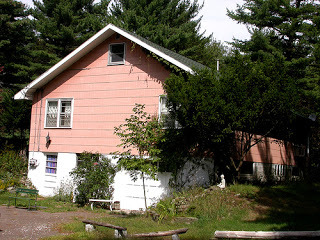 "It was a complete evolution of our musicality," Robbie Robertson said. "It was the point we came to very naturally after starting out playing the Chitlin' Circuit down south, all the way up to Canada with Ronnie Hawkins, and then backing Bob all over the world on that crazy tour. It was our collective musical experience that was a gathering of music that we made, of the places that we went, of characters that we saw." Maybe that's the key to the LPs longevity: it's real, tangible, it's about the things we do for love and because of it. It's about living in a big pink house. It's about discovering who we are through who they were, and it still works today.
"It was a complete evolution of our musicality," Robbie Robertson said. "It was the point we came to very naturally after starting out playing the Chitlin' Circuit down south, all the way up to Canada with Ronnie Hawkins, and then backing Bob all over the world on that crazy tour. It was our collective musical experience that was a gathering of music that we made, of the places that we went, of characters that we saw." Maybe that's the key to the LPs longevity: it's real, tangible, it's about the things we do for love and because of it. It's about living in a big pink house. It's about discovering who we are through who they were, and it still works today.Interestingly, you can stay at Big Pink today. Located at 56 Parnassus Lane (formerly 2188 Stoll Road) in West Saugerties, NY. (Available for $471 per night at http://www.bigpinkbasement.com/rental_main.shtml). The house was newly built when Rick Danko, collaborating with Bob Dylan at the time, found it as a rental. It was to this house that Bob Dylan would eventually retreat to write and experiment with new material in the home's huge basement. The house became known locally as "Big Pink" for its pink siding.
Music From Big Pink truly enhances my vinyl collection, but it is, of course, all about the timelessness of an LP that just turned 50.
Published on December 28, 2018 06:27
Music From Big Pink
 A few weeks back when talking about the Grateful Dead, I mentioned that Americana was in its infancy with the Dead's Anthem of the Sun. If that's the case, then The Band's Music from Big Pink was when Americana got up and ran (yeah, yeah, I get it, they're Canadian). In the current age of bands like Lord Huron and The Fleet Foxes, among the best of Americana in 2018, it's interesting to trace its history all the way back to 1968. To say the least, Music from Big Pink was unexpected. Here was the definition of electric folk: guitars, a stand-up bass, a Farfisa pump organ and the brass of a Salvation Army band. Music from Big Pink was as if Sergeant Pepper really had a lonely-hearts band.
A few weeks back when talking about the Grateful Dead, I mentioned that Americana was in its infancy with the Dead's Anthem of the Sun. If that's the case, then The Band's Music from Big Pink was when Americana got up and ran (yeah, yeah, I get it, they're Canadian). In the current age of bands like Lord Huron and The Fleet Foxes, among the best of Americana in 2018, it's interesting to trace its history all the way back to 1968. To say the least, Music from Big Pink was unexpected. Here was the definition of electric folk: guitars, a stand-up bass, a Farfisa pump organ and the brass of a Salvation Army band. Music from Big Pink was as if Sergeant Pepper really had a lonely-hearts band.When the album's producer, John Simon, tried to interpret what the band was after, Robbie Robertson said he wanted it to sound just like it did "in the basement," referring to the practice sessions with Dylan. Oh, the Big Pink, by the way, was a house in the Catskills in New York not far from Woodstock, and also the home of The Basement Tapes.
My wife always surprises me at Christmas. Of course, as a collector, she will always include in my stash an LP, something I'd never dream of getting for myself. Last year it was a mint, mono Pet Sounds. This year it was a "Very Good" Beatles White Album, with the poster and the portraits. Somehow, though, she knew (telekinesis) that I wanted Music From Big Pink from The Band, coincidentally released 50 years ago this month.
What's interesting about the Big Pink is the fact that you either love it OR you've never heard of it. Eric Clapton said he listened to it every day and Roger Waters of Pink Floyd put it right up there with Sgt. Pepper as the most influential record in rock. He went on to say the album was fundamental to everything that happened after it.
The Band, of course, was Bob Dylan's backup for the controversial electric tour, but when they went off on their own, Dylan stepped to the side. When it was first thought that Dylan would add to the band's incredible harmonies, instead his contribution was merely the wonderful cover art, the painting distinctly Dylanesque. Interestingly, there are six men in Dylan's painting, not just the five members of the band. And there's an elephant. Big Pink is masterful and brilliant for everything it's not: overly long, drug-addled, pretentious or silly. 50 years later it maintains a laid-back simplicity that still sounds fresh (and my copy is mint).
Al Kooper, the founder of Blood, Sweat and Tears, in a rave review for Rolling Stone, said the album was recorded in approximately two weeks and that there were "people who would work their lives away in vain and not touch it." If you've heard it, you already know; if you haven't, what are you waiting for?
 "It was a complete evolution of our musicality," Robbie Robertson said. "It was the point we came to very naturally after starting out playing the Chitlin' Circuit down south, all the way up to Canada with Ronnie Hawkins, and then backing Bob all over the world on that crazy tour. It was our collective musical experience that was a gathering of music that we made, of the places that we went, of characters that we saw." Maybe that's the key to the LPs longevity: it's real, tangible, it's about the things we do for love and because of it. It's about living in a big pink house. It's about discovering who we are through who they were, and it still works today.
"It was a complete evolution of our musicality," Robbie Robertson said. "It was the point we came to very naturally after starting out playing the Chitlin' Circuit down south, all the way up to Canada with Ronnie Hawkins, and then backing Bob all over the world on that crazy tour. It was our collective musical experience that was a gathering of music that we made, of the places that we went, of characters that we saw." Maybe that's the key to the LPs longevity: it's real, tangible, it's about the things we do for love and because of it. It's about living in a big pink house. It's about discovering who we are through who they were, and it still works today.Interestingly, you can stay at Big Pink today. Located at 56 Parnassus Lane (formerly 2188 Stoll Road) in West Saugerties, NY. (Available for $471 per night at https://www.vrbo.com/3970069ha). The house was newly built when Rick Danko, collaborating with Bob Dylan at the time, found it as a rental. It was to this house that Bob Dylan would eventually retreat to write and experiment with new material in the home's huge basement. The house became known locally as "Big Pink" for its pink siding.
Music From Big Pink truly enhances my vinyl collection, but it is, of course, all about the timelessness of an LP that just turned 50.
Published on December 28, 2018 06:27
Bob Dylan and The Band
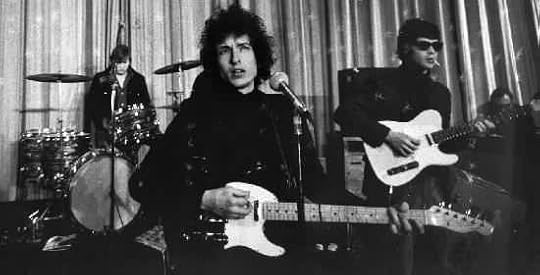 In 1965, Mary Martin, who was working for Bob Dylan's manager Albert Grossman, suggested to Dylan that The Hawks, which included Levon Helm, Robbie Robertson, Harvey Brooks and Al Kooper, might be the perfect accompaniment to the new electric tour. The Hawks were engaged in a four-month stand at Tony Mart's in Somers Point, New Jersey, playing before a nightly crowd of over a thousand with their heady brew of blues and R&B.
In 1965, Mary Martin, who was working for Bob Dylan's manager Albert Grossman, suggested to Dylan that The Hawks, which included Levon Helm, Robbie Robertson, Harvey Brooks and Al Kooper, might be the perfect accompaniment to the new electric tour. The Hawks were engaged in a four-month stand at Tony Mart's in Somers Point, New Jersey, playing before a nightly crowd of over a thousand with their heady brew of blues and R&B. 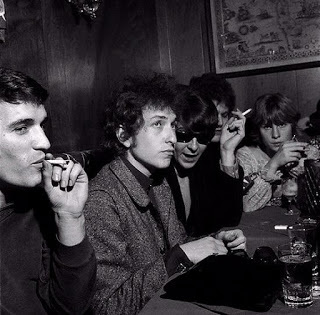 Dylan checked them out and hired Robertson initially for two gigs in late August at Forest Hills Tennis Stadium in New York and the Hollywood Bowl in Los Angeles. Robertson, unimpressed with Dylan's drummer, suggested Dylan also hire Helm. From there, Robertson, Helm, Harvey Brooks on bass and Al Kooper on keyboards were hired on to endure the cacophony of boos that greeted Dylan's second and third electric gigs. (The first was the Newport Folk Festival, where Dylan was backed by Al Kooper and members of the Butterfield Blues Band. Kooper would go on to form Blood, Sweat and Tears shortly thereafter.)
Dylan checked them out and hired Robertson initially for two gigs in late August at Forest Hills Tennis Stadium in New York and the Hollywood Bowl in Los Angeles. Robertson, unimpressed with Dylan's drummer, suggested Dylan also hire Helm. From there, Robertson, Helm, Harvey Brooks on bass and Al Kooper on keyboards were hired on to endure the cacophony of boos that greeted Dylan's second and third electric gigs. (The first was the Newport Folk Festival, where Dylan was backed by Al Kooper and members of the Butterfield Blues Band. Kooper would go on to form Blood, Sweat and Tears shortly thereafter.)Dylan wanted Robertson and Helm to continue backing him in his attack on middle America's consciousness, but the pair responded that they couldn't see doing it without the rest of The Hawks, which also included Rick Danko and Richard Manuel. After rehearsal in Toronto in September 1965, Bob Dylan and the Band took to the road; the moniker, of course, would stick.
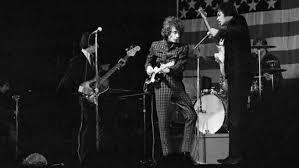 They then moved to Dylan's Catskill home of Woodstock and every week they would fly out on Dylan's private Lodestar airplane, play two or three nights before an audience of "folkie purists" engrossed in ritual booing, regarding an electric Dylan as a sellout to the values of folk music (rather than comprehending music that was years ahead of its time). For many, an electric Dylan was nothing but betrayal; Peter could have done no worse.
They then moved to Dylan's Catskill home of Woodstock and every week they would fly out on Dylan's private Lodestar airplane, play two or three nights before an audience of "folkie purists" engrossed in ritual booing, regarding an electric Dylan as a sellout to the values of folk music (rather than comprehending music that was years ahead of its time). For many, an electric Dylan was nothing but betrayal; Peter could have done no worse.The negativity quickly became too much for Helm, who left and headed back south. "I don't think Levon could handle people just booing every night," said Robertson. "He said, 'I don't want to do this anymore.' He didn't feel that you could do anything with it rhythmically and there was no room and there was no way to make it feel good. To me it was like 'Yeah, but the experience equals this music in the making. We will find the music. It will take some time but we will find it and eventually we'll make it something that we need to get out of it.'"
The experience culminated in late May 1966 at the Royal Albert Hall in London. Columbia Records recorded the event for a possible live LP. The recordings show that, indeed, Dylan and the Band had discovered "this thing". an entity that continually ebbed and flowed as quiet sections alternated with moments of awesome volume and apocalyptic power.
Skip ahead a year. "The next I knew," said Danko, "I found that big pink house that was in the middle of a hundred acres with a pond. It was nice." Danko, Manuel and Hudson all moved into the house, while Robertson ensconced himself nearby. "Everyone remembers the period very fondly. It was the first time since they were kids that they hadn't been on the road. It was the first occasion that they had space, room to breathe, time to think about what they were doing."
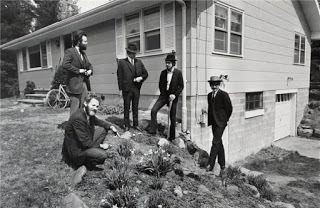 The Band at the Big PinkHudson felt similarly: "It was relaxed and low-key, which was something we hadn't enjoyed since we were children. We could wander off into the woods with Hamlet [their gigantic dog]. The woods were right outside our door."
The Band at the Big PinkHudson felt similarly: "It was relaxed and low-key, which was something we hadn't enjoyed since we were children. We could wander off into the woods with Hamlet [their gigantic dog]. The woods were right outside our door."Every day Robertson, Danko, Manuel, Hudson and Dylan would congregate at what had come to be referred to as "The Big Pink," and for two or three hours they would write songs, throw ideas back and forth, play older songs from a multiplicity of genres and occasionally lay some of it down on a two-track recorder in the basement. It was there in Woodstock that the Band, still under Dylan's tutelage, became The Band.
Published on December 28, 2018 05:56
December 26, 2018
AM and AM on the Radio - iHeartRADIO
As we head into the new year, AM will refocus on new content and now, with our new radio broadcast at Daybreak USA, our new commitment to our readers is to post faithfully twice per week, on Tuesdays and Fridays. Our goal was always to post on a daily basis, something we've done reasonably faithfully for the past five years. The new format will allow for more comprehensive articles and will also coincide with the week's radio edition of AM.
Our new format starts this Friday. In the meantime, check out our archives and listen on Daybreak USA, your local affiliate or on
 click on the logo
click on the logo
Our new format starts this Friday. In the meantime, check out our archives and listen on Daybreak USA, your local affiliate or on
 click on the logo
click on the logo
Published on December 26, 2018 06:50
AM and AM on the Radio
As we head into the new year, AM will refocus on new content and now, with our new radio broadcast at Daybreak USA, our new commitment to our readers is to post faithfully twice per week, on Tuesdays and Fridays. Our goal was always to post on a daily basis, something we've done reasonably faithfully for the past five years. The new format will allow for more comprehensive articles and will also coincide with the week's radio edition of AM.
Our new format starts this Friday. In the meantime, check out our archives and listen on Daybreak USA, your local affiliate or on
 click on the logo
click on the logo
Our new format starts this Friday. In the meantime, check out our archives and listen on Daybreak USA, your local affiliate or on
 click on the logo
click on the logo
Published on December 26, 2018 06:50
December 25, 2018
Update - AM on the Radio
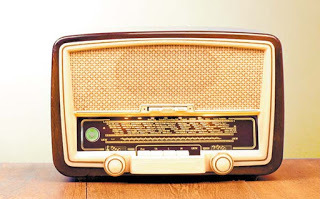 AM has been going strong now for more than four years. Thanks to our loyal readers, we've been able to present modern music in a positive format that allows us to wallow in the history of rock music from the mid-60s to today. We're taking another step now by bringing AM to the radio. Check us out at
Daybreak USA
where twice per week you can catch our five-minute broadcast as a part of Daybreak with Rodd and Rae. The new radio segment will highlight the 50th anniversaries of the music we love. 50 years ago we wore fringed leather jackets or go-go boots made for walkin' and it was the time and the season for loving. Stereotypes aside (not that we don't relish in our stereotypes), join us each week to relive 1968 and AM on the Radio.
AM has been going strong now for more than four years. Thanks to our loyal readers, we've been able to present modern music in a positive format that allows us to wallow in the history of rock music from the mid-60s to today. We're taking another step now by bringing AM to the radio. Check us out at
Daybreak USA
where twice per week you can catch our five-minute broadcast as a part of Daybreak with Rodd and Rae. The new radio segment will highlight the 50th anniversaries of the music we love. 50 years ago we wore fringed leather jackets or go-go boots made for walkin' and it was the time and the season for loving. Stereotypes aside (not that we don't relish in our stereotypes), join us each week to relive 1968 and AM on the Radio.AM on the Radio and Daybreak USA are now available on
 https://www.iheart.com/podcast/966-daybreak-usa-30334029/
https://www.iheart.com/podcast/966-daybreak-usa-30334029/
Published on December 25, 2018 12:46



